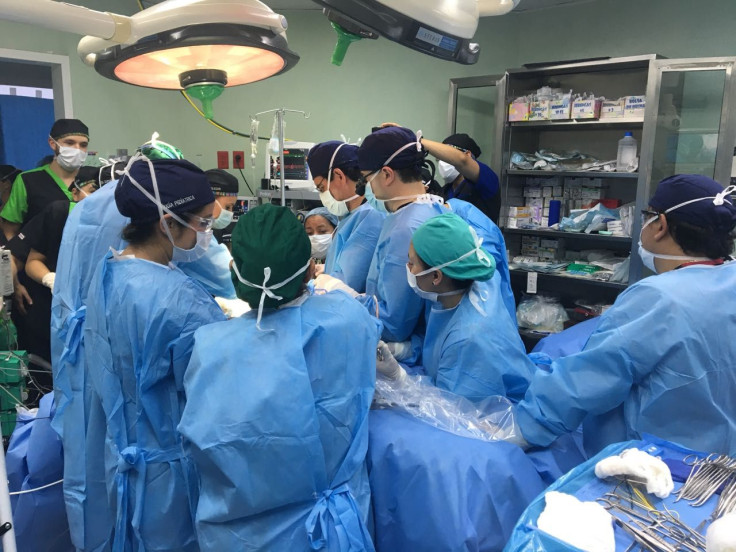
According to experts, conjoined twins are rare, occurring in about one out of every 200,000 live births, with a somewhat higher incidence in Southeast Asia and Africa. Conjoined twins are typically classified by the point at which their bodies are joined. Commonly known cases the siblings are joined at the head, neck, chest or stomach. Separating them always entails a high degree of risk and professional preparation, in addition to many hours in the surgery room.
This is the case of the Guatemalan conjoined sisters, who after 15 hours of surgery, a total of 70 health professionals, including pediatricians, neonatologists, nutritionists, radiologists and anesthesiologists, managed to separate the sisters who were united by the chest. CNN En Espanol reported that experts informed that they shared the large intestine, liver and part of the pericardium. The sisters, who weigh about 10 pounds, were born on August 10 in Jalapa, a town in eastern Guatemala.
#LasEsmeraldas Tras 15 horas de procedimiento concluye con éxito cirugía de separación de las siamesas. Informó el Dir. Del @HRooseveltGT pic.twitter.com/DCEJPLk4SE
— Hospital Roosevelt (@HRooseveltGT) October 24, 2017
At a press conference, Dr. Marco Antonio Barrientos, director of Roosevelt Hospital in Guatemala City, said that the procedure always remained uncomplicated and currently the girls are in a stable condition. "After the separation surgery, the girls will be transferred to the intensive care unit," the hospital informed via Twitter.
#LasEsmeraldas después de salir de la cirugía de separación las nenas serán trasladadas al intensivo pediátrico pic.twitter.com/tya1pXeT3b
— Hospital Roosevelt (@HRooseveltGT) October 23, 2017
#Esmeraldas Medicos del Hospital Roosevelt inician operación de las siamesas pic.twitter.com/O2lWxmi4Ki
— Hospital Roosevelt (@HRooseveltGT) October 23, 2017
The first successful operation to separate conjoined twins was in 1955, by neurosurgeon Harold Voris and his team at Mercy Hospital in Chicago. In 1957, Bertram Katz and his surgical team made international medical history performing the world's first successful separation of conjoined twins sharing a vital organ.
Recent successful separations of conjoined twins include that of the separation of Maria and Teresa Tapia, born in the Dominican Republic on April 8, 2010. Conjoined by the liver, pancreas, and a small portion of their small intestine. Separation occurred on November 7, 2011.
© 2025 Latin Times. All rights reserved. Do not reproduce without permission.






